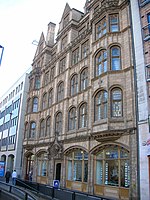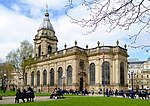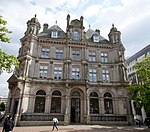Queen's College, Birmingham

Queen's College was a medical school in central Birmingham, England, and a predecessor college of the University of Birmingham. It was founded by surgeon William Sands Cox in 1825 as The Birmingham Medical School, a residential college for medical students. Cox's ambition was for the college to teach arts, law, engineering, architecture and general science. It was the first Birmingham institution to award degrees, through the University of London.Cox went on to found the Queen's Hospital in Bath Row (Drury & Bateman, opened 1841) as a practical resource for his medical students. The 1828 Medical School became the Birmingham Royal School of Medicine in 1836. It became the Queen's College in 1843 by royal charter.
Excerpt from the Wikipedia article Queen's College, Birmingham (License: CC BY-SA 3.0, Authors, Images).Queen's College, Birmingham
Paradise Street, Birmingham Ladywood
Geographical coordinates (GPS) Address External links Nearby Places Show on map
Geographical coordinates (GPS)
| Latitude | Longitude |
|---|---|
| N 52.479002777778 ° | E -1.9038444444444 ° |
Address
Queens College Chambers
Paradise Street 38
B1 2AF Birmingham, Ladywood
England, United Kingdom
Open on Google Maps










